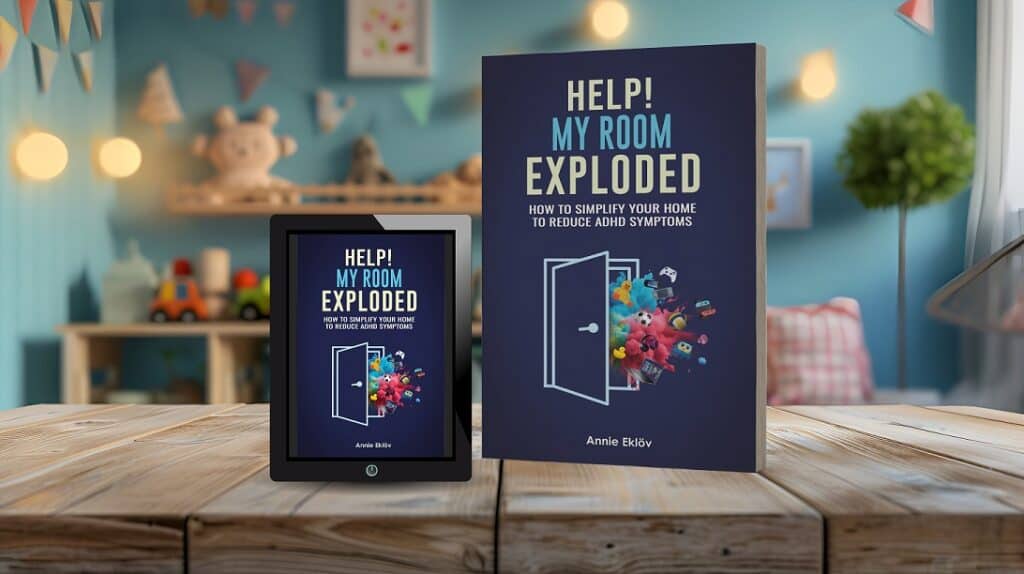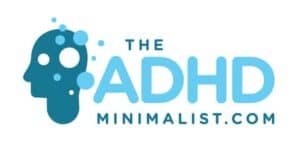
Help! My Room Exploded
How to Simplify Your Home to Reduce ADHD Symptoms
SHORT SUMMARY of KEY POINTS
Copyright by Annie Eklöv
All rights reserved.
Because the references in the book are extensive, this short summary will not include them here. Some parts of this summary include the exact language from the book. Others are paraphrased.
~~~~~~~~~~~~~~~~~~~~~~~~~~~~~~~~~~~~~~~~~~~~~~~~~~~~~~~~~~~~~~~~~~~~
Introduction:
Many families wrestling with ADHD (All types) don’t get the help they need. This well-researched book from a parent’s perspective was written to fill a gap. Not every family has the funds to meet with counselors and psychologists every week, and doctors and teachers are often overly focused on medications as a way to control unwanted behavior.
What families truly need are proven strategies for a better home life. Many meds quit working in the late afternoon or early evening and parents are left to deal with children exhausted from concentrating all day who must now eat (meds suppress appetites), do homework (often after the meds quit working), and get to evening activities (which kids usually resist attending). And, these are just a few issues faced by parents! Clearly, simple step-by-step strategies to make home life easier are worth a try. ‘’I wish I could hold the hand of each struggling parent, listen to their story, and together devise a specific plan to tackle their problems. Unfortunately, I am only one person, but through this book, workbook, and Facebook group I hope parents realize they are not alone.’’ – Annie Eklöv
Main Points:
The focus of this book is three-fold.
First, it dives into the root of the problem for many families struggling with ADHD which is parent/child relationships. The question arises how can we have positive relationships and interactions with kids who are constantly on the verge of explosion? Parents can take heart there is an explanation for why you pull away and feel disconnected from edgy, disruptive children. It’s not your fault! You can only take so many negative interactions and challenging behavioral issues before your brain tries to protect you from getting emotionally hurt again. The great news is making specific changes to how you interact and spend time with your kids can fix these issues, but it will take time and commitment from you.
Second, Examine how clutter affects us. Cluttered living environments add a layer of distraction, overwhelm, and frustration for those with ADHD, and their families. Lage a teenager with ADHD tells the story of how he reduced his ADHD symptoms through decluttering, and you’ll explore how scientific studies back up his findings. An easy step-by-step plan is laid out to simplify kids’ rooms, which can be adapted for decluttering parents’ bedrooms or an entire home. It’s important to optimize the areas of the home that kids with ADHD use regularly to reduce distractions and promote concentration.
Third, the book reminds us that parents often need to work on themselves before they’re able to help struggling children. It follows a mom and her journey to get past her fears in order to help her son and daughter. None of us are perfect parents we all come with baggage, and following the steps in the book can help you overcome fear and doubt. It’s important to realize that you are the expert on your child. Doctors are experts in their fields and teachers in their classrooms, but they don’t live with your kids. You are the expert and you need to be bold, so your kids get the help they need.
Conclusion:
Families are stressed and it’s time we did something about it. The fast pace of life is stressful for every family, but when you add typical ADHD behaviors to a family already stretched to the limits you may hit a breaking point. It’s best to be proactive and carve out time for your kids before everything explodes!
Let’s face it, we’ve all been there gazing with horror and amazement at the mess our little (and sometimes big) angels make. We’re left pulling our hair and wondering, ‘’Is there a cleaning lady who can shovel the mess out the window?”
The good news is, that making specific changes in your child’s bedroom can improve cleanliness, encourage good study habits, boost your relationship, spark creativity, help concentration, promote calmness, and improve mental health.
The difference can be as pronounced as night and day. My daughter went from avoiding her room to spending time there, and the simple phrase, “Time to clean your room,’’ no longer evokes tears and defiance. She quit screeching, crying, and yelling when I asked her to pick up and can now clean her room with minimal help from my husband and me.
If it works for her and her brother, it can work for your kids too! This book guides you to work with your child and get things under control. It may be their bedroom or your relationship that needs tackling, but the sooner you teach your child coping strategies, the easier their lives will be.
